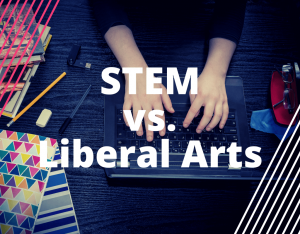Many people often relate STEM to technology and rarely ever wonder why science is important in STEM. To try to figure this one out myself, I decided to do some research on this quarter of the equation.
Why is science important in STEM? The STEM model takes an interdisciplinary approach to using knowledge in each field to help understand how the world works and to solve problems. Data gathered using scientific method observations and experiments may be used to support problem-solving and understanding in the STEM model.
As STEM expands, the role of science in STEM may change. Using the scientific method may start to take the back seat to reverse engineering or vice versa. Here, we’ll look at why Science is important to STEM now and how this could change in the future.
Table of Contents
What Does Science Mean In STEM?
It is easy to think that science and science in STEM mean the same thing. Science alone and science when included in STEM still have the same definition. It is the way they are seen and used which makes the difference.
Science is the study of the physical and natural world through observation and experimentation.
Before we look at what science in STEM means, we must realize that STEM is more than just an acronym. STEM does indeed stand for science, technology, engineering, and math, but it is recognized by how each subject relates to one another to understand the way the world works or to solve a problem.
I like to look at STEM as a car. Each part of a car has its purpose but works with other parts of the car to get passengers from point A to point B.
Science in STEM is like the fuel system in a car. The fuel system gives the engine enough resources for it to energize other parts allowing the car to operate.
When science is in STEM, it is used to collect data that is used by its other subjects to make decisions.
How Is Science Used In STEM?
We have established that STEM uses an integrated approach to get a better perception of how the world works and to find answers to problems. Science is used to collect helpful data in the STEM model. For example, a marine engineer may notice certain buoys sinking during the winter so she measures the effects of temperature, current, and sea level on the buoys for a period of time. She then uses that data along with her knowledge of analytic geometry and CAD software to design a 3D printed prototype buoy.
Did you notice how science, technology, engineering, and math were all important components in this example? Observation and experimentation are parts of science, analytic geometry is math, and CAD software with 3D printing is part of technology.
Since the “S” in STEM represents Science, without science experimentation, STEM, or TEM, would have a hard time gathering trusted data.
What Is STEM Science Education?
Before we look at what STEM Science Education is, we must first look at what STEM Education is and what Science Education is. STEM Education is an interdisciplinary approach where students typically learn through projects to make connections between the classroom and the world around them. Science Education is broken down into Biology, Chemistry, and Physics where students examine the structure and behavior of the physical and natural world through observation and experimentation.
STEM science education is not so much a mix of STEM Education and Science Education, but more of how science education fits into STEM education. STEM relies on the scientific method to collect valuable data that supports theories. In STEM Science Education, students use data collected through observation and experimentation to help solve a problem and/or create a solution.
How Does STEM Education Fit With Science Education?
STEM education and science education are two different beasts. Science education can be traced back as early as 1850 while STEM education is the new kid on the block, dating only as far back as the early 2000s.
It is important to remember that science is a rigorous process that does not lend itself to broad conclusions. A deep understanding of science, what scientists call the “Nature of Science,” is needed to make sense of a STEM approach to science education.
Some critics say that the STEM approach is too narrow to have a wide understanding of the Nature of Science. But does all of that matter? It is no secret that STEM was created to promote youth into science, technology, engineering, and math careers to meet the demands of a workforce needed to compete on the world stage. This career-focused way of looking at science education can be seen as a watered-down version. But, don’t most interests start with a snippet of exposure?
If we can get children to become interested in pursuing a career path, we must expose them to different fields of education so they can choose their path naturally.
How Can Science In STEM Change In the Future?
Now knowing the importance of science in STEM, you may conclude that science is not going to disappear from it any time soon. Some additions may come and go such as the “A” for art in STEAM, but the huge role science plays in STEM makes STEM unable to proceed without it.
The “S” in STEM will never go away but we do not know if STEM, as a whole, will stay. After all, this isn’t the first time a career-concentrated education was focused on and it may not be the last.



